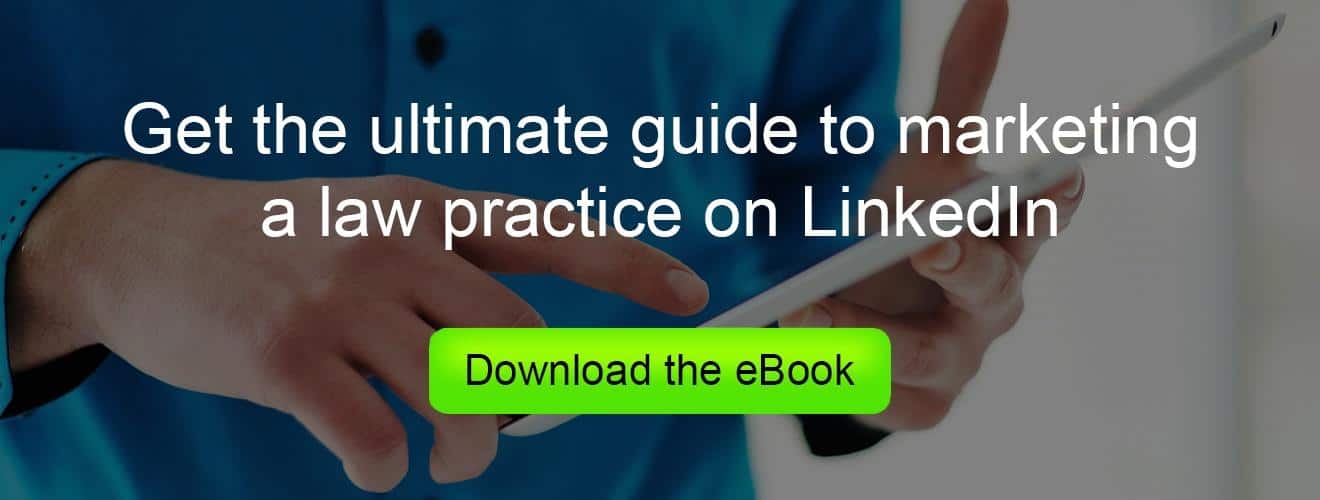Lawyers who invest time into growing their LinkedIn network will see an increase in new revenue for their firm.
As a growing number of professionals spend more time on LinkedIn, lawyers have an unprecedented opportunity to cultivate relationships with colleagues and clients. And these relationships will translate into new revenue if you take the time to build and maintain your network.
Building a powering network on LinkedIn isn’t something that happens on its own. You have to put a little effort into it in order to see results. Implementing these four easy steps can help you get started finding new business for your law firm using LinkedIn:
1. Participate in LinkedIn Groups (the right way)
Groups give you the chance to find new people who aren’t in your network to connect with. A lot of lawyers on LinkedIn have a bad habit of posting in LinkedIn groups and never actually engaging with anyone in the group. Doing this might get more eyes on your content, but it does nothing to help you grow your network.
You should always be adding value to these groups, whether you’re posting your most recent blog article or you’re commenting on a post to offer advice based on your legal knowledge. This is the best way to show off your expertise in front of prospects.
Get involved in a mix of groups where you’ll find other attorneys and potential clients. You can send 15 free 1:1 group messages to fellow group members each month. This limit is set for all the groups you belong to and not for each group individually. Use this feature to connect with users who aren’t in your current network.
2. Reach out to your connections directly
Make an effort to touch base with your connections each month by selecting three or four to reach out to through email or InMail. This is a quick, easy way to strengthen your connections with the people in your network and may even result in new business.
Take a look at their profile and recent activity before you send them a message so you can get an idea of what they’ve been up to recently. This will help you craft a message that sounds genuine and shows you’ve taken an interest. Remember that reaching out is about keep your relationship solid, not promoting your legal services.
Take this step a little further if you’re reaching out to someone in your area. Try to extend an invitation to meet in person over lunch or coffee.
3. Learn when to say no
It’s unlikely you’ll only receive requests to connect from people related to your industry or practice area. It’s best not to add users to your network for the sake of having a large amount of connections. If you accept every single LinkedIn request, then you risk cluttering your newsfeed with irrelevant content and missing out on posts from people you actually want to engage with.
If you have over 500 connections, but only a small portion are in the legal industry or work in your practice area, then it will be obvious that you accepted every request that came your way. Your potential connections will be able to see that you are an unfocused networker, which will damage your credibility.
The goal is to build a network and use LinkedIn to nurture those relationships. The quality of your network will determine the quality of your results. You won’t be able to engage with a community that is not relevant to your practice area or interested in your expertise.
If you want to build a network that can support your business objectives and result in referrals, then you have to be strategic about who you connect with on LinkedIn. If you get a request to connect from someone who doesn’t seem like they could be a potential client, referral relationship or resource, then don’t accept their invitation.
4. Add your custom URL to your business card
LinkedIn allows users to create a vanity URL that looks cleaner and makes their profile easier to find. If you go into your settings, you can edit your LinkedIn URL to LinkedIn.com/in/FIRSTNAMELASTNAME.
Putting this custom LinkedIn URL on your business card will make it easier for people to connect with you. With social media becoming such a popular form of communication, some people might be more inclined to connect with you on LinkedIn in place of sending you an email or giving you a call.
This is a great way to take your in-person networking online and continue to promote your personal brand beyond networking events.
You may be able to follow up with people through email or phone, but getting them to connect with you on LinkedIn provides an opportunity for you to demonstrate your qualifications and expertise in a way you may not have been able to during a brief conversation at an event.


